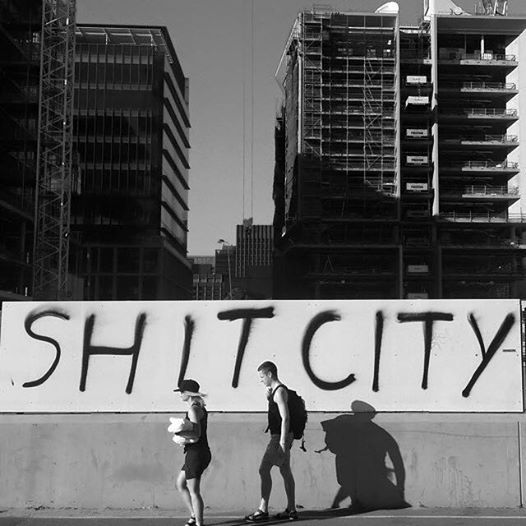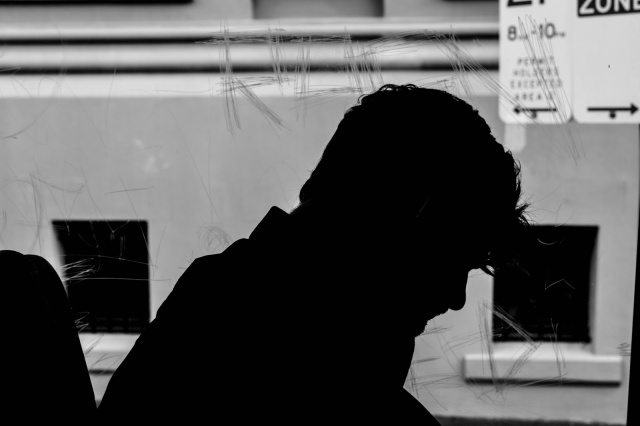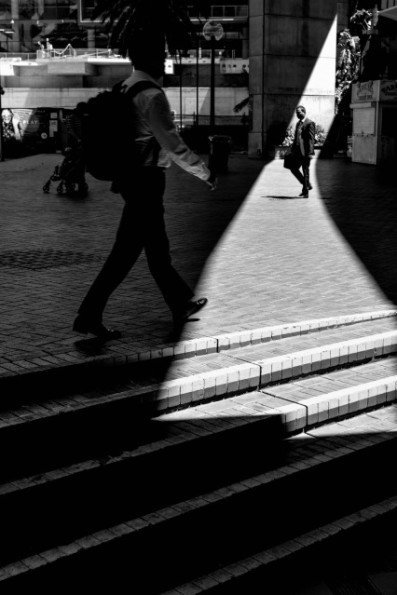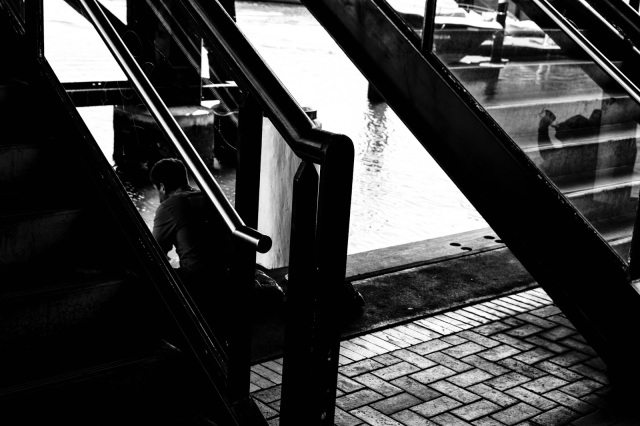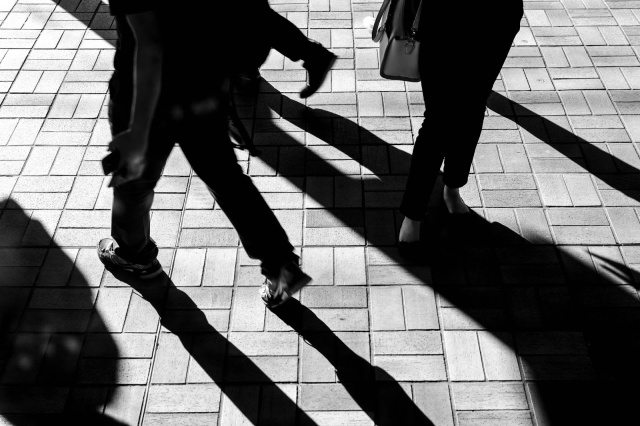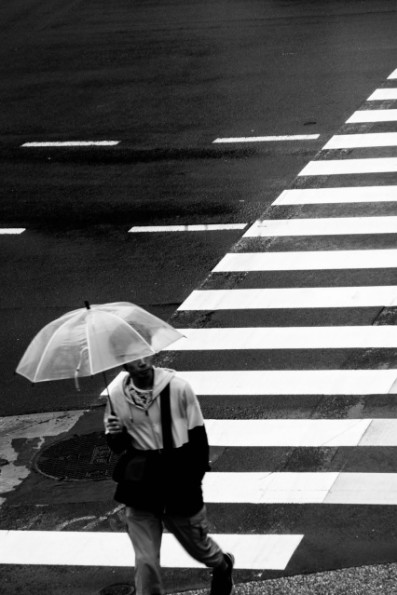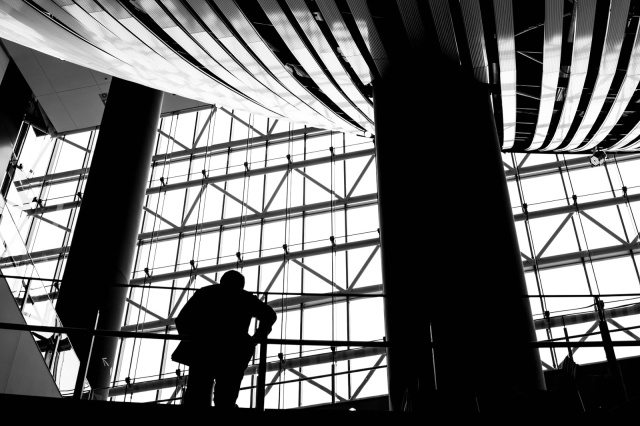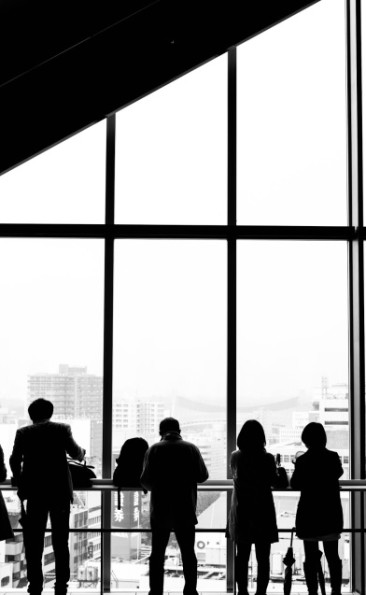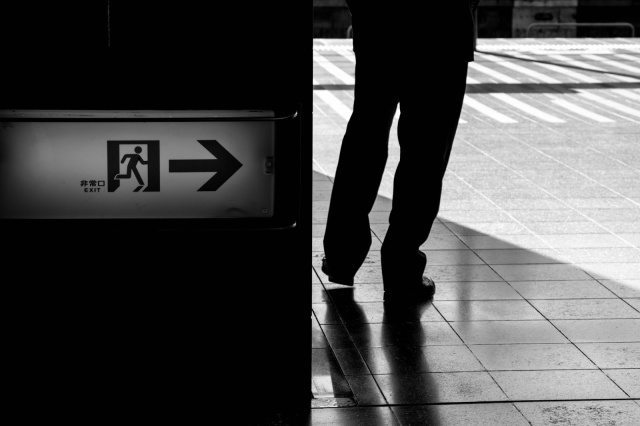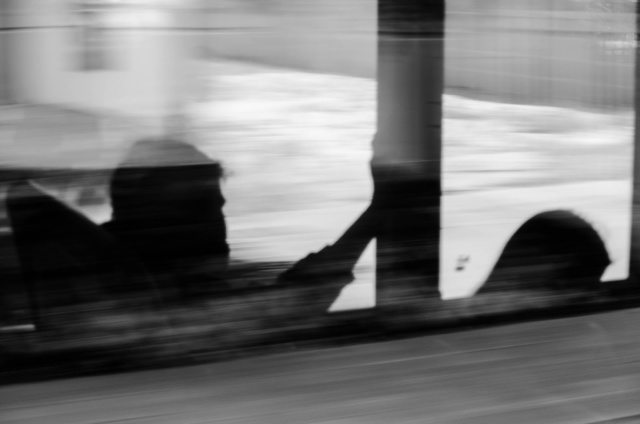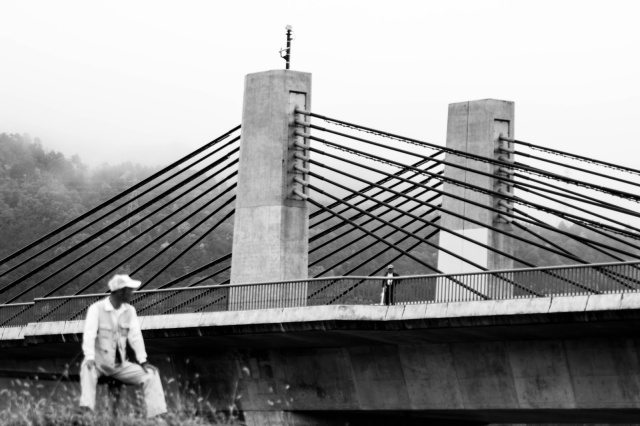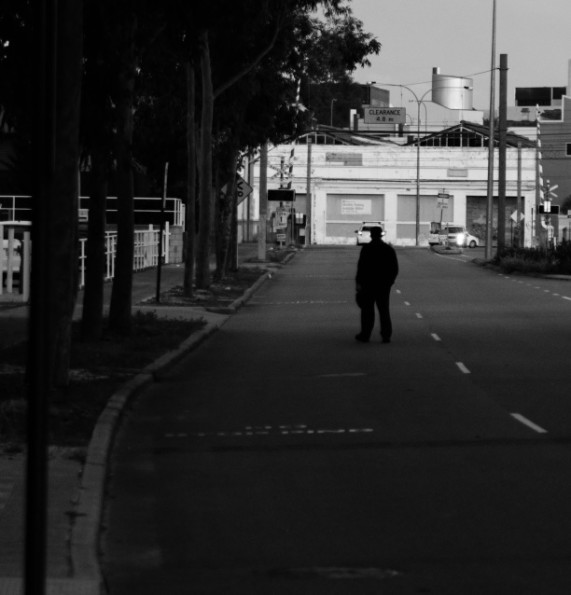Last Updated on 03/25/2016 by Chris Gampat
All images by Ed Fetahovic. Used with permission.
“I’m predominantly an abstract urban landscape photographer and sideline street photographer and am wondering if theres anything interesting on my website that you guys would like to feature.” says photographer Ed Fetahovic in an email to the Phoblographer.
Ed describes his approach to the medium as one of modernist art. He doesn’t only shoot black and white, but some of his strongest work is monochrome. If you consider his thought process, it makes sense. “I think people interact with geometric shapes and negative spaces on a deep and ethereal space beyond their conscious limitation which pushes me to bring more and more abstract urbanist photos to view.” says Ed about his work.
For Ed, photography is an artistic release.
Phoblographer: Talk to us about how you got into photography.
Ed: I spent a little bit of time prior to discovering photography looking for an artistic release. I tried a variety of different fields like many do, I dabbled mainly in trying to become a guitarist and a writer but found whatever was crammed into my head wasn’t being expressed. My ideas and thoughts were too visual and none of the other mediums I used to try and explain it seemed to get rid of the constant nagging of visual ideas.
Photography never really seemed to appear as an option for me, I always thought painting would have to suffice but the learning curve was so steep and whilst always being someone who appreciated a canvas painting, the competition to get noticed in that space was not just a very difficult medium, but it existed in a world now moving to the digital space which had me quite disinterested. So the frustration of not being able to express the weird and wonderful ideas visual present just built up in the background for a few years until my mum tell’s me one day that my dad had taken up photography.
I was curious about it at that point but my perception of the medium was somewhat ignorant. I didn’t know enough about the medium to know about some of the most prolific works of art by artists that I now adore. I inquired about why he took it up and his response is what had me intrigued. It seemed to have changed his point of view on a lot of things to a deeper and more fascinated notion. I noticed he became happier and also that he began to interact with things he would other wise probably leave unnoticed – that’s what initially drew me to photography.
The realization that even though a lot of people spend time staring at their digital images is that it’s their way of experiencing the world and sharing it with ease.
I think memes are the perfect example – ever come across a meme that literally explains how you’ve felt in a certain situation? Well now you can relate better to the millions of other people who’ve seen that meme and actively use it in response to something so as to express themselves. That was my first mental and somewhat philosophical introduction to photography.
Phoblographer: What made you get into street photography and urban geometry?
Ed: I dabbled in a lot of different styles. When I started out I thought I was going to be a landscape photographer because I spent a lot of time taking photos of landscapes. I even won a local competition with one of my landscape photos which landed me some professional studio lights. I think the extra equipment I got from that win however was what made me realise that photography was more and more about decisive moments than walking around at random trying to take enough photos in the hopes that one of them will be a stunner. I was still new to photography when I had this process of thought.
My partner luckily introduced the concept of researching art outside of the photographic medium and even just looking into the history of photography as inspiration to direct me to compose and develop my own voice and style. I found a world of art I had no idea was even there. I feel in love with Ansel Adams black and white landscapes which always spoke to me like charcoal landscape drawings, however I looked to Vermeer to start learning about lighting and contrast and scene setting,
I looked to the street photographers such as Moriyama, Erwitt, Powell and Meowitz to name a few to learn about deceive moments and depth of interaction and from there I started to look at anything that would allow me to pull the visuals out of my head and onto the screen (too many to mention). The names I mentioned were heavily influential in me beginning to orchestrate my currently emerging style. I fell instantly in love with their raw ability to show all these different aspects of our daily life that you otherwise wouldn’t notice. When I noticed that about their work; street photography was a given from that point onward. I think the biggest pull to the style was in realising and understating how it was thought of, sought after and what it meant. I think the raw moments captured gives us insight into life, how it behaves and thus delving into your own reality and trying to discover who you are. I don’t think there is a more beautiful concept in life than that one right there.
The urban landscapes came about very recently when I noticed that I had an affinity to the shapes and moments created in abstract by the purposeful but extremely random assortment of building and their decaying architecture. So now – I try and element and feature both in my visions and ideas. My voice is still developing and I still have a lot to learn but as Elliott Erwitt says “If I couldn’t take a perfect picture I wouldn’t be a photographer”.
Phoblographer: Your work is extremely high contrast stuff that if blurred or converted into some sort of charcoal etching would be just about the shapes. So how does your mind’s eye go about composing scenes, figuring out exposures, and adhering to your creative vision?
Ed: I think I’ve always been someone interested in the abstract moment. I spent a lot of time reading and writing about philosophy because that’s how my mind seemed to always be – I would always visualise strange and interesting moments but always struggled to explain it to people verbally. To compose my moments fundamental lines and shapes are critical for me to even consider taking the photo. Lighting comes into play a lot but I’m highly attracted to negative space and minimalism as well. I’ve noticed recently that I like diagonal lines that turn into triangles and effectively shapes that are somewhat not their total shape. So a bent triangle for example. Normally to get these types of shadows, lines and shapes mid day is the best time to walk through the city – I find the sharpest and cleanest lines appear at that time too – so I’m usually out taking photos at what is probably considered the worst time to take photos by many photographers.
My shutter speed sits between 250-600 depending on whether there is shade or not, my iso sits at 100 and never changes unless I’m in a tunnel or underground parking of some sort and I try and keep my aperture constantly at f/8. I normally just change the shutter speed depending on the light available – but I also like to mess around with the available light and the cameras response to it. I find negative space can easily be made with over exposure if there is a dark enough scene available to contrast the over exposure. Given I’m still new to photography, I’m still learning and playing around with the settings however!
Phoblographer: You’ve had your work featured in a big newspaper, but what is it like for you trying to shop this work around into galleries and other places?
Ed: So far – the only success at being featured in galleries I’ve had are the ones I’ve won some form of competition in. I’m still working on refining my artistic style prior to approaching any art collectives and galleries as the critiques I’ve had thus far is that my style needs to be more developed. Hopefully in the near future maybe one (a few?) of my prints will be up on the wall of a gallery somewhere. I would absolutely love that! That being said I have sold some prints to some local friends and followers and am continually surprised when I get compliments from peers regarding the progression of my work.
Phoblographer: What motivates you to shoot a specific scene? The lighting? The shadows?
Ed: The scene has to be about the moment. Usually I wonder if people have noticed an interesting wall or how often someone might even see the contrast between the red of a fire hydrant booster and they grey of the wall behind it colour blocking each other. I know of a few places in the city were by around mid day the red of the fire booster will splash onto the grey of the wall and for the first time in 24 hours those two non connected inanimate objects actually interact – which to me is fascinating and awesome. So usually I firstly wonder if people have ever noticed something – and then I think about how I can get them to notice it if I think it’s worth highlighting (as in what features are drawing me in)- from there it’s taking into account the line that the shadows make, the negative space I can manipulate, the harshness of the light available or lack their of, the colours or lack there of and how abstract it seems to me.
If my gut starts to twist I know I’ve found a moment I’m in love with so that will usually be the critical mass moment causing me to hit the button several times to find the right composure. I wont stick around for any longer than 30 seconds however, hence me mentioning the moment earlier. When I do photo walks – my technique is to survey things from afar then from in close – if nether catch my attention I keep walking until something does.
Phoblographer: Talk to us about the gear that you use.
Ed: I started out with a Nikon D5100 and predominantly used a 28-105mm macro lens my partner gifted to me. I did most of my natural landscape work with the 28-105mm and I loved (still do) that lens – however I challenged myself one day to try a different lens and outside of the generic 18-55mm and 55mm-300mm lenses that you get stock standard with the D5100. When I bought the D5100 my dad gave me a 35mm prime he never used alongside the other lenses I mentioned. I decided to try it out on the street one day given 35mm was the standard lens on a film camera used for street photography back in the day.
I haven’t stopped using the 35mm since (around 3 months now). I upgraded my camera however whilst I was traveling in Japan to a D7200 and so my combination of equipment is as such. I bought the D7200 because I was worried the D5100 was getting a little old. It was a 4th hand camera at that point.
Phoblographer: What direction are you trying to take your work in and how do you want it to progress?
Ed: I want to progress my photography to a point where I can show the delicacies of my ideas in galleries. It’s a tough aim but I hope to be able to show that many of our day to day habits have left even the most interesting areas of our cities and urban areas unseen and neglected. I think part of the reason why abstract, and cubist and modern art existed was for a similar reason. We spent so much time focusing on the beauty of pretty and “perfect” that we forgot to realise that we are indeed also the very opposite of that. I think I’ll be continuing to refine the path I’m on where geometric moments come into play with raw street photography – but I do like the two mediums on their own also and will continue pursuing each on their own as well.
I will also continue discovering both colour and black and white photography and hopefully one day my vision and interests will be viewed by a wider community as an expression of continual search for meaning of the moments behind the scenes.


